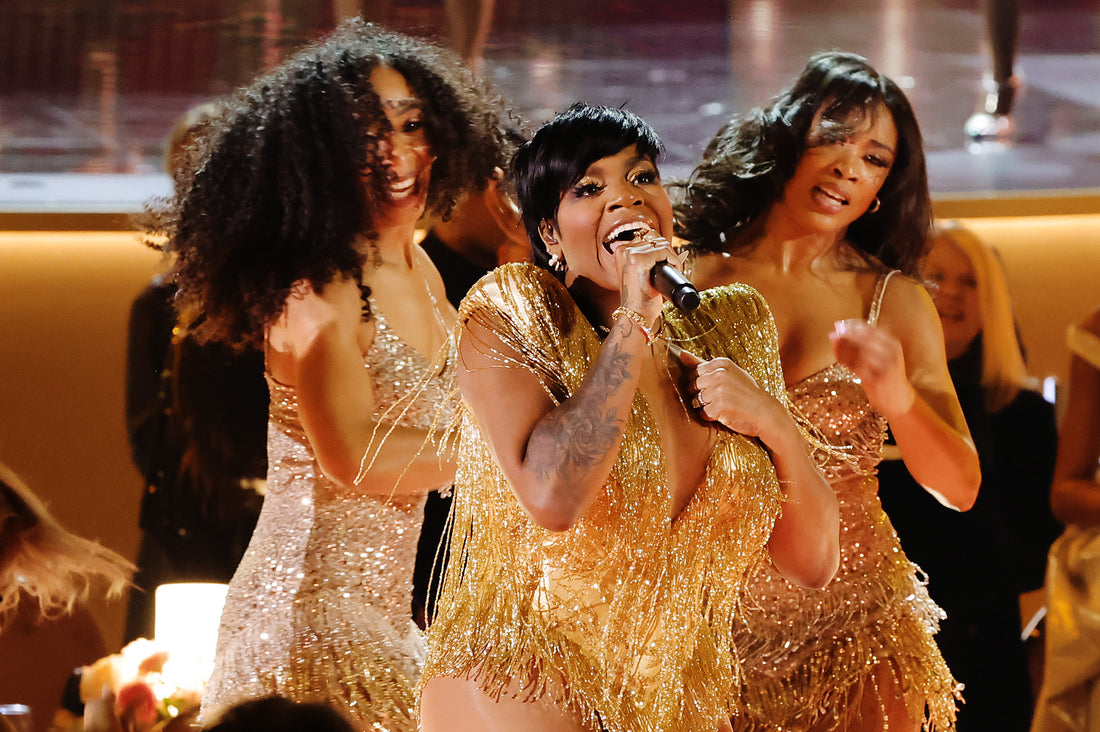The Crypto.com Arena (or the Staples Center, if you’re old school in downtown Los Angeles), is an imposing structure, appearing even more starkly colossal when devoid of Lakers, Clippers, or Kings fans. Replace the people with infrastructure like vans, satellite dishes, and generators, and you can imagine what it looks like to stage the GRAMMY Awards. This year’s GRAMMY Awards brought an audience of approximately 16.9 million, who tuned in to watch a program showcasing numerous prominent performances and unexpected once-in-a-lifetime moments. This signifies a notable 34 percent increase compared to the viewership of last year's broadcast.
Putting on an awards show is a Herculean effort, and the GRAMMYS is one of the most taxing. The number and scale of moving parts – including staging, instruments, audio gear, performers, stagehands and many other aspects – demands months of preparation, knowledge, and attention to detail. With the help of the Recording Academy Producers and Engineers Wing technical PR representatives Robbie Clyne and Corey Walthall on site, journalists received a private backstage tour of the Crypto.com Arena that gave us a glimpse into the inner workings of “Music’s Biggest Night,” and how the sound heard in the arena also makes its way to your device of choice. And don’t forget, the floor seating area for the GRAMMY Awards is positioned above a basketball court of the Crypto.com Arena, which in turn is situated atop an ice rink!

The Crypto.com Arena. Photo by Thomas Fogel.

An overview photo of the Crypto.Com Arena during Grammy rehearsals. Photo by Kevin Winter/Getty Images for The Recording Academy.
First, the music has to get captured from the show’s stages. Before any audio feed makes its way out of Los Angeles, it has to sound good for the artists performing on stage, attendees in house, and to the various broadcast trucks that will eventually get the audio and video out to the world. During rehearsals, each artist performing at the ceremony receives roughly an hour soundcheck to get everything right. The house mix is worked on by front of house (FOH) music mixer Jamie Pollock through a DiGiCo Quantum 7 digital mixing console, while FOH production mixer Jeff Peterson adds production elements (hosts/announcers’ mics, video packages, etc.) from his DiGiCo Quantum 338 digital mixing console. The audio is fine-tuned to get the best mix in the cavernous arena, with steep walls and other less-than-optimum acoustical attributes.
The main GRAMMY stage is split into two halves, the A Stage and B Stage. Like every other live performance, the performers’ monitor mixes are handled separately. The entire setup of instruments for each artist is stationed backstage on individual risers, fully wired and prepared. This allows for seamless transitions onto the stage, where the setups can be swiftly rolled into place and plugged in, facilitating rapid changeovers between performances.

Front-of-house music mixer Jamie Pollock at the DiGiCo Quantum 7 digital mixing console. Photo by Kevin Winter/Getty Images for The Recording Academy.

Dua Lipa performs onstage during the 66th GRAMMY Awards. Photo by Kevin Winter/Getty Images for The Recording Academy.

The tympani riser ready to go on stage for the Billy Joel segment of the show. Photo by Kevin Winter/Getty Images for The Recording Academy.

Billy Joel premieres his new song, "Turn the Lights Back On." Photo by Kevin Winter/Getty Images for The Recording Academy.
Jeff Peterson, who is also the system designer at audio vendor ATK Audiotek (now owned by Lititz, PA-based Clair Global), pointed out that the design of the PA system is affected by the stage and the set design, which also impacts the placement and number of speaker cabinets. “We need to have clear sight lines so my speakers can’t be in front of anything pretty, so that will determine how high I have to [place them], but I also don’t want [them] to be too low, because then you end up with a lot of energy close to the ground.” Peterson also noted that even though the home audience does not hear exactly what the arena crowd hears, it has to sound good in the house first so the performing artists have a great experience, or else viewers will not have any chance of having a good experience at home. “That’s really my job, to make it intelligible out here. You [have to be able to] hear everything the [presenters and performers are] saying, but not so loud and booming that you hear it on TV and go ‘oh, wow, they’re in an arena.’”
Next we got to chat with Steve Anderson (A2 lead/rack room) who oversees the technical area from where all the audio signals are routed as they come off the stage. We also got to talk with Michael Abbott, whose official title is Audio Producer (who has worked on the show for the past three decades) and views his role as a coordinator very seriously: “I work a month and a half, two months, sometimes more with The Recording Academy and members from the Producer and Engineers Wing [and] the vendors, and we come up with a plan that we [execute].” [The Producers and Engineers Wing (P&E) is the technical wing of the Recording Academy, which presents the annual Grammy awards – Ed.]
Anderson patches in all of the live audio signals from the stage and converts them to digital as part of the preparation for broadcast. In “Patch Land,” as Anderson calls it, all of the audio signals being used out on the stage come in and go out through hundreds of cables, configured according to the plan that Abbott and his team have developed. Each cable represents a distinct audio channel, whether a single hi-hat on a drum kit or the vocals from a backup singer, so Anderson was relieved when the show transitioned to digital after years of analog cables.

"Patch Land" is where all of the live audio signals from the stage get converted to digital as part of the preparation for broadcast. Photo by Thomas Fogel.

Steve Anderson standing among the cables and hardware in Patch Land. Photo by Thomas Fogel.
All of the signals from the onstage microphones are converted from analog to digital, which typically cuts down on the number of cables needed, but because there are so many channels, there are still a ton of cables to work with. However, going to digital enables the audio engineers to use fewer recording machines than with analog, and the hardware takes up much less space. Anderson does not miss his years of having to put channel labeling tape on 10 monitor consoles!
After the audio from the stage leaves Patch Land, it heads to the two M3 (Music Mix Mobile) remote music production trucks located outside at the top of the load-in ramp of the Crypto.com arena. A prominent member of the P&E Wing, engineer/producer Glenn Lorbecki, whose title on the show is GRAMMY Broadcast Music Mix Audio Advisor, has been working on this part of the show for years, and knows the trucks inside and out. One remote truck handles the A Stage and the other covers the B Stage. The trucks are identical and can do each other’s jobs. “These two trucks are redundant,” says Lorbecki, “so that if something happens – if one truck loses power – everything [can] immediately [move] over to the second truck and be mixed from there – it’s a live broadcast and you only have one shot to do it so redundancy is the insurance policy.”

Tracy Chapman and Luke Combs duet on "Fast Car." Photo by Kevin Winter/Getty Images for The Recording Academy.

Joni Mitchell and Brandi Carlile performing "Both Sides Now." Photo by Kevin Winter/Getty Images for The Recording Academy.
Both trucks are outfitted with identical LAWO MC562 48-fader surface mixing boards, M&K speakers, and Waves Extreme Server and associated Waves software. Lorbecki continued, “We send a 5.1 music mix to the Denali live production truck positioned beneath the arena downstairs where GRAMMY A-1 production mixer Tom Holmes sends a 5.1 production mix to CBS, which then gets distributed to the world. Any stereo conversion happens locally via downmix.”
The last stop on the A/V journey, the Denali truck serves as the hub for consolidating video and audio elements. I got to talk to Tom Holmes about his 5.1 production mix which includes the 5.1 music mix, combined with other audio production elements such as host/announcer mics, audience ambience/reaction mics, and pre-recorded walk-on/walk-off music, etc. It includes all of the award announce elements and any audio that accompanies video.

GRAMMY A-1 production mixer Tom Holmes at a Calrec audio mixing console. He sends a 5.1 production mix to CBS, which then gets distributed to the world. Photo by Kevin Winter/Getty Images for The Recording Academy.
I also spoke with audio technician/playback mixer Eric Johnson, who is in charge of the walk-on/walk-off music. Holmes casually reminds us that Johnson also has the ability to wield the dreaded “hook” for award winners who talk too long, with “noodle music” to cue them to get off the stage. “Johnson has the power to get anyone off the stage, no matter how big the star is. The show has to run according to schedule. “Why, he could noodle Adele off the stage!” Holmes told me, laughing. “I’ll noodle anyone!” replied Johnson. All of these audio components (the 5.1 production mix) are then integrated with all aspects of the video tech including the multiple camera feeds, graphics, etc., and routed to another trailer for broadcast, eventually reaching millions of viewers globally.
A fundamental part of the Crypto.com Arena’s bones – the infrastructure – includes the patch room located right behind the Denali truck. Looking like an old school telephone operator’s room, the patch room can connect people working in both the arena and in remote locations, including the Los Angeles Convention Center, and the Peacock Theatre. Depending on the segment of the show, these remote locations can have audio/video routed to and from them as part of the GRAMMY broadcast. Stepping inside that room really illustrates how much the building has been through and how many incredible events it has hosted.

The rack of cables that connects the buildings across the L.A. Live complex. Photo by Thomas Fogel.
After chatting with these behind-the-scenes individuals and viewing the technology necessary to make it happen, it became clear just how much effort and dedication goes into staging the GRAMMYS each year. It’s no wonder it's the most complicated awards show production. Every person running their post is a pro at the top of their game; people like Anderson and Abbott have each been at it for over 40 years, while Peterson has 15 years of experience.
This was the 66th annual GRAMMY Awards – their talent and dedication keep the show running smoothly, year after year.

Lana Del Rey, Phoebe Bridgers and Taylor Swift attend the 66th GRAMMY Awards. Photo by Monica Schipper/Getty Images for The Recording Academy.

SZA accepts the Best R&B Song award for "Snooze." Photo by Kevin Mazur/Getty Images for The Recording Academy.

Kylie Minogue and Ed Sheeran enjoying the GRAMMY Awards celebration. Photo by Kevin Mazur/Getty Images for The Recording Academy.
Header image: Fantasia Barrino performs onstage during the 66th GRAMMY Awards. Photo by Kevin Winter/Getty Images for The Recording Academy.



